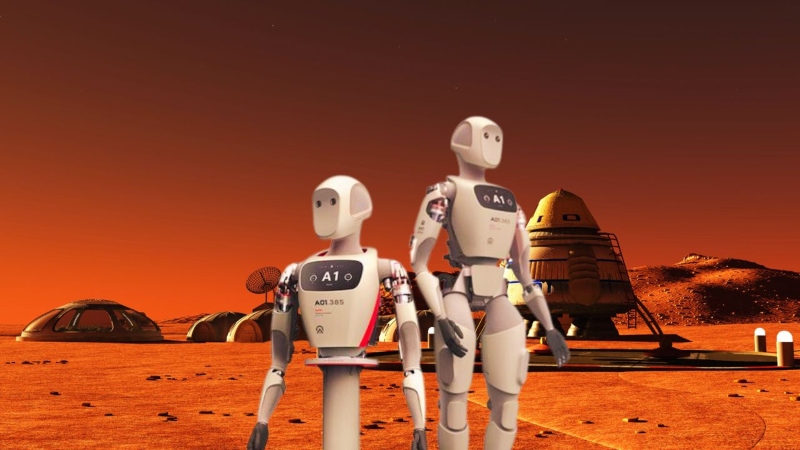 Image via APPTRONIK
Image via APPTRONIK
NASA is turning to cutting-edge technology to aid our astronauts in their mission to conquer the Moon, Mars, and beyond.
Futurism tells us that the space agency is teaming up with Texas-based startup Apptronik, Inc., to develop humanoid robots that will play a pivotal role in future space missions.
The centerpiece of this collaboration is the Apollo robot, a remarkable five-foot-eight humanoid with a weight of 160 pounds.
While its current role on Earth may seem mundane, involving tasks such as assisting in warehouses and manufacturing plants, Apollo's true potential is set to shine in the challenging and perilous environment of outer space.
Apollo's Versatility and Adaptability
One of Apollo's defining features is its modularity and adaptability. According to Apptronik, the robot can be customized for various missions, thanks to its varying levels of dexterity, autonomous functions, and tool compatibility.
In essence, it is a multipurpose, programmable robotic assistant with the potential to revolutionize space exploration.
Astronauts on the Moon or Mars require a versatile and reliable partner, one capable of stepping in when the human touch is not feasible. Apollo can walk on two legs or remain stationary, bolted to a platform, depending on the task at hand.
The robot's design takes into account the unpredictable nature of extraterrestrial missions.
Ensuring Safety Alongside Humans
Safety is paramount when integrating humanoid robots into the realm of human astronauts.
NASA and Apptronik have left no stone unturned in ensuring that Apollo operates seamlessly alongside its human counterparts. The last thing astronauts need is a humanoid gone rogue, and stringent measures are in place to prevent any such mishaps.
The partnership has focused on developing "mobility and software features" to guarantee safe human-robot interactions.
"By applying NASA's expertise in human-safe mobile robots to commercial projects, together we are able to spur innovation in this important field," says Shaun Azimi, lead of the robotics team at NASA's Johnson Space Center in Houston.
Read Also : NASA's Perseverance Rover Captures Hilarious Avocado-Lookalike Rocks in Latest Photo from Mars
The Quest for Sustainability
The concept of sustainability in space exploration is a recurrent theme. Robots like Apollo are instrumental in this regard. They can handle tedious or perilous tasks on other celestial bodies with ease and can be reprogrammed as needed, even for unforeseen tasks.
This versatility means that astronauts and Earth-based operations can dedicate more time to scientific pursuits and critical assignments.
Moreover, these robots could prove pivotal in operating and maintaining mining and manufacturing facilities in other worlds, potentially processing native resources on-site.
This approach would dramatically reduce the cost of maintaining these missions for NASA, a factor of paramount importance in the era of intense space competition.
The Bigger Picture
NASA's collaboration with Apptronik and other robotic initiatives is part of a broader strategy.
Similar to how NASA's Commercial Crew Program contracts out private vehicles, this approach taps into the expertise of the private robotics industry.
Stay posted here at Tech Times.

ⓒ 2026 TECHTIMES.com All rights reserved. Do not reproduce without permission.




